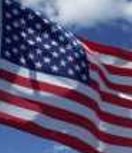|
|
CLASS INFORMATION
This page has a LOT of information!
|
Materials:
Students will have with them at all times:
- A three ring binder to keep their papers neat and in order. 1 inch rings are fine.
- A spiral notebook for taking notes in class and at home. 75 pages is fine. I will give each student one notebook to start the year off.
- Several pencils.
- Loose-leaf binder paper.
- 3x5 index cards (or larger is ok)
- School planner.
- Charged device (iPad)
Course Objectives:
We will be following the 8th grade science standards as determined by the State of California and the Petaluma School District.
- Rules & Safety: Lab procedures, equipment and safety
- Metric System: Distance, mass and volume.
- Physics: Forces, motion, density
- History of the Earth, and Life on Earth
- Astronomy: The Earth, Sun, Moon and stars.
- Human Interaction: Sexual reproduction, birth control, STD’s and HIV. You should have already received a permission slip, which is REQUIRED, for this portion of the class, which will not occur until May.
Textbooks:
- Each student will be issued a textbook to cover and take home. Students do NOT need to bring their books with them to school. Keep it at home.
- Students will be assigned reading in their books frequently. Homework reading will always include taking notes into a spiral notebook.
- Damage or loss of the books will result in a TEXTBOOK FINE of up to $65. Failure to pay the fine for lost or damaged books can prevent you from being included in end of the year activities such as the Marine World trip, Fun Day, the graduation dance and promotion activities. The fine follows you onto the highschool.
Grading Policy:
- Work in this class will have a point value, which will be totaled and converted to a letter grade. Some teachers keep separate grades for each grading period, but I do not. Any grade that I report through the semester is an OVERALL percentage from the beginning of the SEMESTER, not each grading period.
- I post grades in my room by student ID number. Students will always know what their grade is according to my calculations. If the percentage that I post is not the same as the student’s calculations on their Grade Record Sheet, then they can come to me to determine the problem.
- Also, I will keep all grades posted ONLINE for parents to access off of the Web. You can click on the "Grades" link to the left.
Assignments:
We do class work and homework to prepare for the labs that we do in class. The labs prepare the students for the tests. ALL my assignments are designed to work together.
- Class work and homework are given to introduce concepts before class discussion and to reinforce those
larger assignments or labs.
- Lab work is very important to your grade in this class. Labs usually take several days to complete, and are important to understanding and demonstrating key concepts
- Quizzes will be given without notice and at random to check understanding of ideas and information.
- All tests are given with lots of notice and lots of review. Questions for the test are taken from assignments that have been done. Failure to do class assignments will adversely affect test scores
- Student notebooks will be collected and checked for completeness.
Assignments will be graded as follows:
- Heading: Points will be deducted for incomplete heading.
- Following directions: Listen to what I expect from you!
- Neatness: If I can’t read it I am not going try to decode it.
- Accuracy: Yes, I do expect you to get the right answers.
- On time: Work needs to be turned in when it is due.
Late Work:
I give PLENTY of time to get assignments done. Work needs to be turned in on the day it is due. I will accept work on the next class meeting for part credit.
Absences:
When a student is absent the student must make up any missed work. The student will need to find out what they missed and make it up as soon as possible. Everything is posted online, so students should use this resource. Students should ask me what they missed at a time convenient to Mr. Lang. The beginning of class is usually not a good time. The end of class, lunch and after school are usually good times to ask.
Science Binder:
I feel that organization is a skill that is very important for 8th graders to master before moving on to high school. I require that students keep their science work in one binder separate from other classes. This binder will be organized in a specific way to make keeping track of everything easier.The binder needs to be clearly marked with the student’s name and period, either on the outside cover, or on the inside. If a binder is left behind in my class I want to be able to easily identify its owner.
- Section 1: Current Work
- This section will include all class work that the student is working on. This will include worksheets, class assignments and lab work that have not been turned in yet.
- Section 2: Returned Work.
- Students will record all assignments that are returned to them onto the handout “Grade Record Sheet.” Work that is returned to them will be filed in this section of the binder. Do NOT throw any returned work away until you are told to do so. Your work with the score on it is your receipt for your grade!
I will have binder checks where students will display their binder to me for credit. Since they need to be in order at all times, checks will be done at random.
Rules, Procedures and Safety:
My rules are in place to make my room a safe learning environment. Failure to comply can result in loss of credit, tardies, detentions or referrals.:
In science class safety is a big concern, especially during lab activities. Students will be using chemicals, glass equipment and fire. Any horseplay or inappropriate behavior will not be tolerated. Failure to comply will result in being removed from the room and a zero score on the lab.
|
Lab Write Ups
I am particular as to what the labs papers look like. The lab activities & the lab papers are a BIG part of the grade. They are the "hands on" part of the class. A lab write up should be a student's best work. Most labs are scored out of 20 points.
Parts and Order:
- Directions, Observations, Analysis, Conclusion
- All in the correct order.
Appearance:
- Clean appearance, neat, legible and orderly.
- Done on binder paper, NOT spiral notebook paper.
July 18, 2016
Science:
- All the data is gathered accurately.
- All calculations are done correctly.
- Any graphs are labels and drawn properly.
- The correct units are included on all numbers.
Conclusion:
- Typed & printed out
- All the questions are answered.
- Rephrasing of the question.
- Full sentences and full ideas.
- Vocabulary used correctly.
- The lab clearly explained.
An "A" paper appears as follows
(Excellent-Perfect work, 19-20)
- The paper presents a clean appearance, is neat, legible and orderly.
- All the parts of the lab are included.
- The lab papers are put in the correct order.
- It is clear that the student fully understands all the concepts in the lab.
- The experiment is performed accurately.
- All the data is gathered accurately.
- All calculations are done correctly.
- Any graphs are labels and drawn properly.
- The correct units are included on all numbers.
- The conclusion addresses all the prompting questions.
- The conclusion is written in full sentences and full ideas.
- The conclusion is explained correctly using appropriate vocabulary.
- The conclusion is clearly explained in a way that would make sense to someone not in the class!
A "B" paper appears as follows
(Above average)(16-18)
- The paper presents a clean appearance, is neat, legible and orderly.
- All the parts of the lab are included.
- The lab papers are put in the correct order.
- It appears that the student understands what happened in the lab.
- The experiment is performed well.
- The data, analysis and any graphs are done fairly well with only minor mistakes.
- Few, if any numbers are missing correct units.
- The conclusion addresses all the questions.
- The conclusion is written in full sentences and full ideas.
- The conclusion uses most of the appropriate vocabulary, but some may be missing or misused.
- The conclusion is explained in a way that would make some sense to someone not in the class!
A "C" paper appears as follows:
(Average work)(14-15)
To qualify for a “2,” the paper must have the following:
- The paper is legible, but not entirely neat.
- All the parts of the lab are included.
- The lab papers are put in the correct order.
- It appears that the student understands most of what happened in the lab.
One or more of the following problems are present in the paper:
- Minor problems with the experiment, data, calculations or graphs.
- Some of the numbers are missing units, or the units are misused.
- Most of the conclusion questions are addressed correctly.
- The conclusion is not written in full sentences or full ideas.
- The conclusion is explained in a way that would make no sense to someone not in the class, but would make sense to someone who knew what the lab was about.
A "D" paper appears as follows:
(Poor work, barely acceptable)(12-13)
To qualify for a “1,” the paper must have the following:
- The paper is legible.
- The data, analysis and conclusion must be present.
Several of the following problems are present in the paper:
- Problems with the experiment, data, calculations or graphs.
- Numbers are missing units, or the units are misused.
- There must be at least some of the conclusion questions addressed.
- The vocabulary is either not used or not used correctly.
- The conclusion is not written in full sentences or full ideas.
- It is not clear that the student understood what happened in the lab.
- The conclusion does not make sense.
Why do you grade so hard on the labs?
I spend a LOT of time going over the labs. I review what the data should look like and what the graph should look like. I go over every question on the conclusion. THERE IS NO REASON TO NOT GET AT LEAST A "C" ON THE LABS!
Students frequently ask me, "Why did I not get an A on this paper?" To get an A it needs to show me that they understand what we did. Not just able to repeat the basics. I reply, "Could you have added more?" If the answer is YES, then it is not an A. |
Extra Credit
Students are always asking about extra credit.
Any extra credit will be just that... EXTRA. Not "instead of." So all regular work will need to be turned in before I accept any extra credit - even if it is turned in for zero points.
There is a maximun amout of credit I will accept, and that is decided on an individual basis. I usualy do not accept any extra credit at all until after the first progress report.
So what can a student do to get extra points? Find science in the world around them.
Visit a science related place & do a write up of what you saw, did or learned.
- SRJC Planetarium
- Exploratorium
- California Academy of Science
- Sonoma St Open Observatory
Watch a science related TV show & do a write up of what you saw. Possibilities include (but not necessairily every epsiode of)
- Mythbusters
- Good Eats
- Junkyard Wars
- Science Channel shows
- Discovery Channel shows
So, how many points will you get? It really depends on what you do, how big a write up you do, and how much you learned. Different, unique experiences are always interesting!
EVERYTHING is up to my discression. |
Wish List
Tissues: The school provides cheapie tissues. With 150 kids, there are a lot of them that have colds or allergies. Good tissues are appreciated!
Band-aids: Kids get boo-boos and its easier to give them a bandage then it is to send them to the office.
Alka-Seltzer: We use them in a few labs and demos.
Box Tops for Education: You know those little coupons on your cereal and other products? They are worth $0.10 each for the school.
Construction Materials:
Index cards (3x5): We use them in building a few things in astronomy. get a pack for your kids to make flashcards out of too!
Cardboard Tubes: Paper towell, and wrapping paper rolls.
Straws: Drinking straws, big ones, like slurpee straws.
Balloons: 9" or 12" latex baloons.
|
|

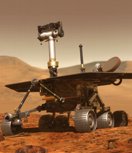

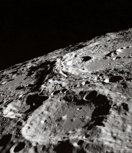

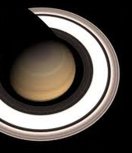
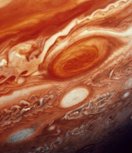


|
